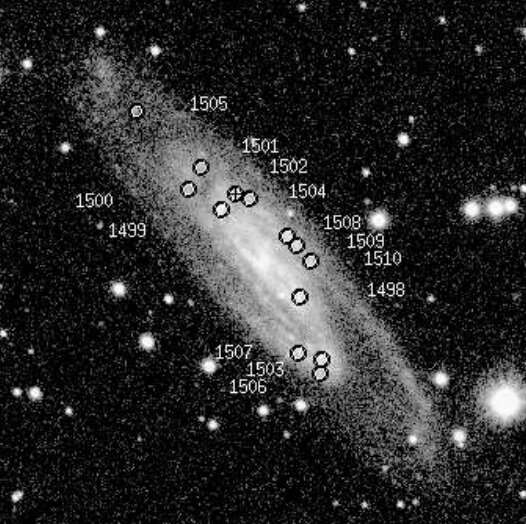April 16, 2020 report
Astronomers investigate young stellar complexes in the galaxy UGC 11973

Astronomers have performed photometric and spectroscopic observations of young stellar complexes in the giant spiral galaxy UGC 11973. Results of this observational campaign provide important insights into the properties of these complexes. The study was detailed in a paper published April 9 on the arXiv pre-print repository.
Located at a distance of approximately 192 million light-years away, UGC 11973 is a spiral galaxy with a radius of about 228,000 light-years, total stellar mass of around 94 billion solar masses, and absolute magnitude of -22.0. These parameters make it one of the brightest, largest, and most massive galaxies in the local galactic neighborhood.
Previous observations of UGC 11973 have shown that active, constant-in-time star formation processes take place in this galaxy. However, detailed studies of these processes are challenging due to the UGC 11973's large inclination and its proximity to the plane of the Milky Way.
Recently, a team of astronomers led by Alexander S. Gusev of the Lomonosov Moscow State University, Russia, took up the challenge and investigated active star formation in UGC 11973. They have observed UGC 11973 using the 1.5-meter telescope of the Maidanak Observatory and the 6-meter telescope BTA of Special Astrophysical Observatory of the Russian Academy of Sciences, focusing on 13 largest star formation complexes in this galaxy.
"We have carried out the analysis of the photometric and spectral observations of 13 young stellar complexes in the giant spiral galaxy UGC 11973," the paper reads.
According to the study, the 13 investigated complexes in UGC 11973, designated No. 1498 to 1510 have radius between 19,600 and 74,000 light-years. Their masses are estimated to be at least 170,000 solar masses, while in the case of complex No. 1502, it was found that its mass exceeds 1.6 million solar masses.
The research found that the age of the observed complexes does not exceed 300 million years. The complex No. 1502 turns out to be the youngest of the studied sample as its age was estimated to be around 2 million years.
The astronomers managed to investigate the complex No. 1502 more thoroughly than the other twelve and found that its surrounding gas has a solar metallicity and temperature of about 5,000 K. These values are typical for HII star-forming regions in giant spiral galaxies.
Furthermore, the complex No. 1499 was found to be the brightest one out of the observed sample. In general, the complexes closer to the center of UGC 11973 are systematically less bright and more red than the outer ones.
In concluding remarks, the researchers noted that the parameters of the population of stellar complexes in UGC 11973 are typical for star-formation regions in the large late-type spiral galaxies.
More information: Young Stellar Complexes in the Giant Galaxy UGC 11973, arXiv:2004.04701 [astro-ph.GA] arxiv.org/abs/2004.04701
© 2020 Science X Network





















